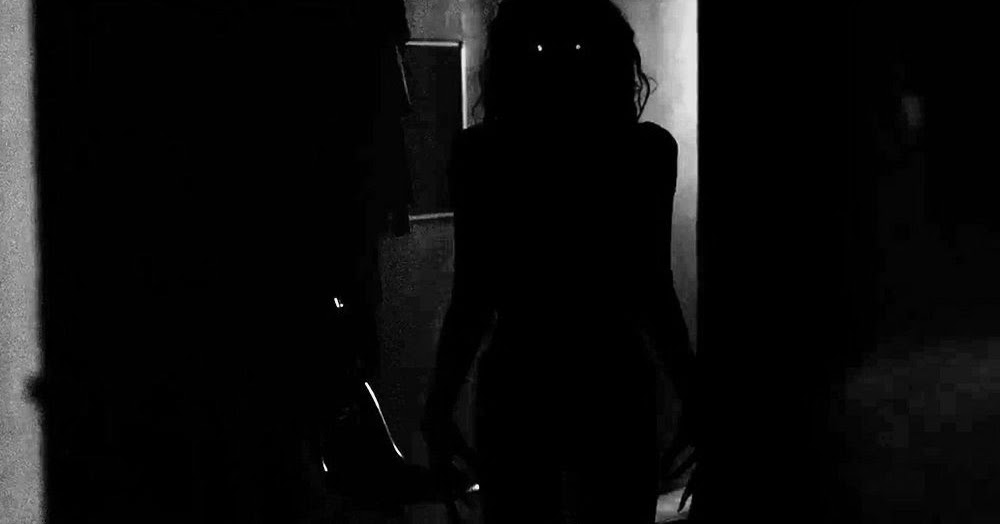
Just last year we had Pixels, a soul-crushing example of what not to do. That may sound like a matter of course, this is something that can go wrong. Whenever you have a short like this, the hope is that it doesn’t get commercialized at all and the end result is essentially a 90-plus minute version of the short.

You’ve seen this kind of thing a million times before, but it’s so perfectly executed that it doesn’t matter here. When you get fresh pants and watch it again, you notice a couple of things - despite the critical adulation, it’s actually a very traditional, by-the-numbers, sound-based jump scare sequence.
Diana lights out skin dease movie#
This movie is, of course, based on the brilliant 2013 short film of the same name. Though content to simply run away from the situation when it was happening to her, Rebecca is determined to confront her mother and Diana and save Martin from a similar destiny. Paul’s death exacerbates Sophie’s condition, and Diana once again begins stalking Rebecca and her young half-brother, Martin (Gabriel Bateman). Lights Out is a stellar horror film that walks the line between terrifying and fun, but before that, it’s a happy ending for a genius short.Īfter a pulse-pounding introduction in which a shadowy woman kills Paul (Billy Burke), Lights Out follows his step daughter, Rebecca (Teresa Palmer). Several years before, Rebecca’s mother and Paul’s widow, Sophie (Maria Bello) was left by her first husband and fell into a deep depression, in which she began communing with said shadow woman, the ghost of her old friend Diana (Alicia Vela-Bailey). Diana haunted Rebecca as a child, driving her to cut ties with her mother. That’s the entire mechanic of this scene - it’s on a timer. Rebecca sleeps next to a flashing tattoo sign that periodically floods her room with soft red light. (McAleer is a guest reviewer for Catholic News Service.This scene is an example of how Lights Out plays with its monster. Some material may be inappropriate for children under 13. The Motion Picture Association of America rating is PG-13 – parents strongly cautioned. The Catholic News Service classification is L – limited adult audience, films whose problematic content many adults would find troubling. The film contains occasional bloody violence and scary imagery, a suicide, implied nonmarital sexual activity, drug use and some crude language. As it is, the otherworldly situation within which the climactic misdeed is committed diminishes its likely influence, meaning that at least a few well-grounded grownups may choose to witness it. Were the context any less remote from real life, the movie would have to be considered unsuitable for all. Unfortunately, the film’s ending is not only unexpected and shocking, it’s also morally unacceptable.

She left home years ago to escape Mommie Dearest (sorry, wrong movie), but is now determined – with the aid of her lovesick boyfriend Bret (Alexander DiPersia) – to rescue her brother.Īt a brisk 81 minutes, “Lights Out” doesn’t unduly tax viewers’ patience.


It was also fatal – or so the doctors thought.įast forward 20 years, and Sophie is twice married, off her meds, and acting very strangely when the sun goes down.Īs the body count starts to rise in the dead of night, Sophie’s estranged daughter, Rebecca (Teresa Palmer), enters the picture. Diana contracted a rare skin disease which rendered her hideous and, ultimately, invisible. The backstory reveals that Sophie and Diana met as children, when both were committed to a mental institution. Zombielike Diana is repelled by light, which is why Martin sleeps with a flashlight. His demented mother, Sophie (Maria Bello), is camped out nightly in her dark bedroom with her best friend, a feral creature named Diana (Alicia Vela-Bailey). Young Martin (Gabriel Bateman) has a better reason than most 10-year-olds for not being able to get to sleep. Gabriel Bateman and Teresa Palmer star in a scene from the movie “Lights Out.” The Catholic News Service classification is L – limited adult audience, films whose problematic content many adults would find troubling.


 0 kommentar(er)
0 kommentar(er)
